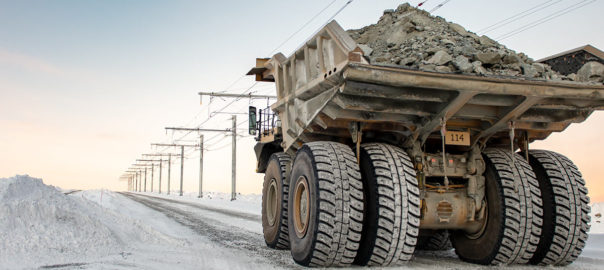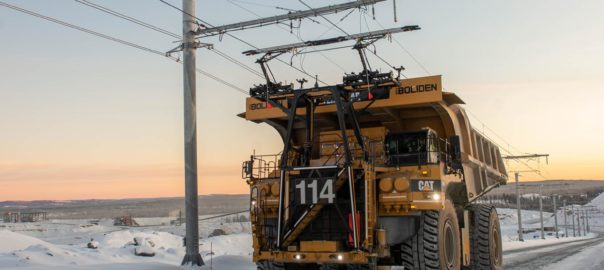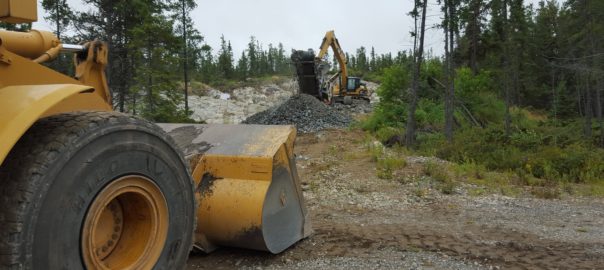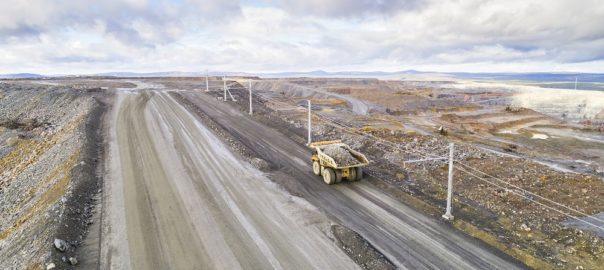Thanks to Boliden’s recent trial at its Aitik open-pit mine, in Sweden, the subject of trolley assist is back on the mining industry’s agenda.
Offering environmental and productivity benefits, trolley assist technologies have been spoken of for decades. In the height of the oil crisis of the 1970s, numerous studies examining applications were completed and miners made preparations to reduce their reliance on diesel.
Despite this, widespread industry adoption has not occurred. There have been some installations in Africa, in addition to one in Turkey (Kisladag), but the technology has not caught on to the extent many thought would happen.
ABB, which supplies not only batteries, drives and motors for battery-electric equipment, but can also provide the infrastructure required for trolley assist projects, believes the market is about to turn once again. Gunnar Hammarström, Global Product Manager Trolley Electrification Systems for ABB, thinks there are three main reasons why it is about to take off.
“One is the legislation and environmental part of the business case,” he told IM.
“Another completely different reason for why demand has been picking up, especially for larger trucks, is there are a lot of diesel-electric trucks coming into mines,” he said. These trucks already have an electrical system on board to tap into, which makes it easy to put them on a trolley line.
Lastly, fuel prices are increasing all the time, Hammarström said. This is leading miners to diversify their energy mix to help reduce input costs.
When added to the productivity gains that can be achieved with trolley assisted haul trucks and the reduction in noise when trucks run on this line, it is hardly surprising Boliden is not the only one charging into trolley assist.
In the last year alone, First Quantum Minerals has said it will equip its Cobre Panama copper-gold mine, in Panama, with trolley assist, while Austria iron ore miner, VA Erzberg, has announced it intends to electrify the main haul road of its Erzberg mine site and operate a fleet of T 236 trucks from 2021 under trolley assist.
On top of this, RNC Minerals has said it is studying the use of trolley assist at its Dumont nickel-cobalt project in Quebec, Canada.
While trolley assist has been used long before the mine electrification phenomenon we know today gained traction, Hammarström sees trolley assist helping facilitate this market move.
“Generally speaking, I think for most of the vehicles you have in a mine, you can go on battery, but it is very far into the future where you have major uphill transportation of all your production in the mine through batteries,” he said.
The technology involved with stationary charging and the ability to re-charge the battery when going downhill would need to improve on the biggest haul trucks to make it a viable proposition, he explained.
“Yet, if you look into the future – and not that far – a diesel electric trolley might be an intermediate phase,” he said. “If you have invested in trolley now, you can certainly use it when you have batteries (driving the trucks).”
This could see battery-powered haul trucks carry out tasks ‘off-line’ when going downhill or on a flat before they ‘attach’ back onto the line for uphill transportation of material when the battery is recharged.
“I think after diesel-electric powered haul trucks, it will be a really good chance for on-board charging,” he said of the trolley infrastructure.











